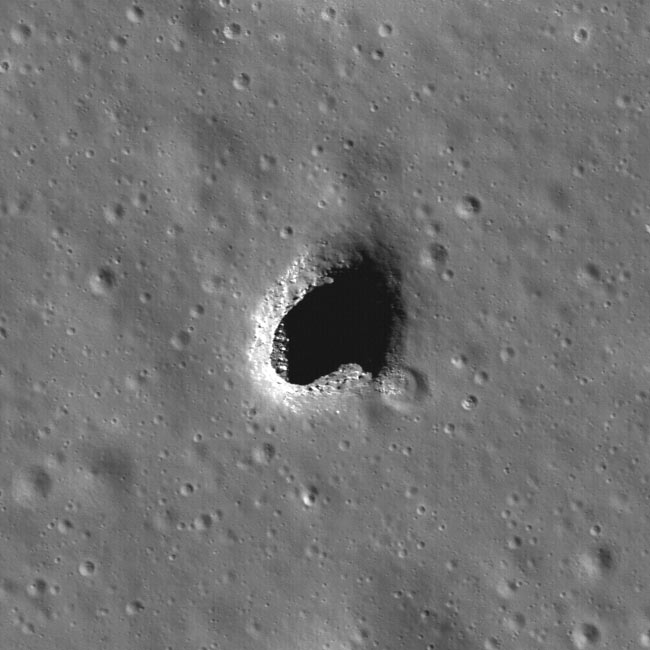Rare Hole In the Moon Photographed

New photos of the moon have revealed the most detailed viewsyet of a rare hole in the lunar surface — a pit large enough to swallow anentire football field whole.
High-resolution cameras aboard the Japanese Kaguyaspacecraft first spotted the irregularly shaped chasm, located in Mare Ingeniion the moon's southern hemisphere. Now, NASA's Lunar Reconnaissance Orbiter hastaken a new, up-close photo of the moon pit from lunarorbit.
"Only three have been discovered thus far, so I believeit is safe to state that skylights (pits) are rare at the 100-meterscale," Mark Robinson, principal investigator for the Lunar ReconnaissanceOrbiter Camera (LROC) at Arizona State University, told SPACE.com in an e-mail.
Mare Ingenii, also called the "sea of cleverness,"is best known for its prominent lunar swirls, which are highly reflectivesurface features that are associated with magneticanomalies. The new images of the region from LROC show a giant pitmeasuring about 427 feet (130 meters) in diameter.?
The boulders and debris resting on the floor of the cavityare partially illuminated and likely originated at the surface, falling throughthe pit opening during its collapse. The hole is thought to be the result of apartially collapsed lava tube.
A similar moon pit, which was believed to be a skylight intoa lava tube, was previously discovered by the Kaguya mission in the MariusHills region of the moon. The new pit in Mare Ingenii, however, lacks thenumerous volcanic features that were found in the Marius Hills region.
"The existence of lava tubes and thus skylights hadlong been postulated," Robinson said. "However it is a surprise to mehow large and beautifully preserved are the three that we have seen thusfar."
Breaking space news, the latest updates on rocket launches, skywatching events and more!
Closer examination of Mare Ingenii could help scientistsunderstand the differences between the two areas of the lunar surface, and suchdiscoveries could also spur on furtherexploration of the moon, said Robinson.
"Imagine how fantastic it would be to land in one ofthese skylights and explore underground on the moon!" he said.
- Gallery— Full Moon Fever
- Top10 Amazing Moon Facts
- FullMoon on Saturday Includes Partial Eclipse

Denise Chow is a former Space.com staff writer who then worked as assistant managing editor at Live Science before moving to NBC News as a science reporter, where she focuses on general science and climate change. She spent two years with Space.com, writing about rocket launches and covering NASA's final three space shuttle missions, before joining the Live Science team in 2013. A Canadian transplant, Denise has a bachelor's degree from the University of Toronto, and a master's degree in journalism from New York University. At NBC News, Denise covers general science and climate change.
